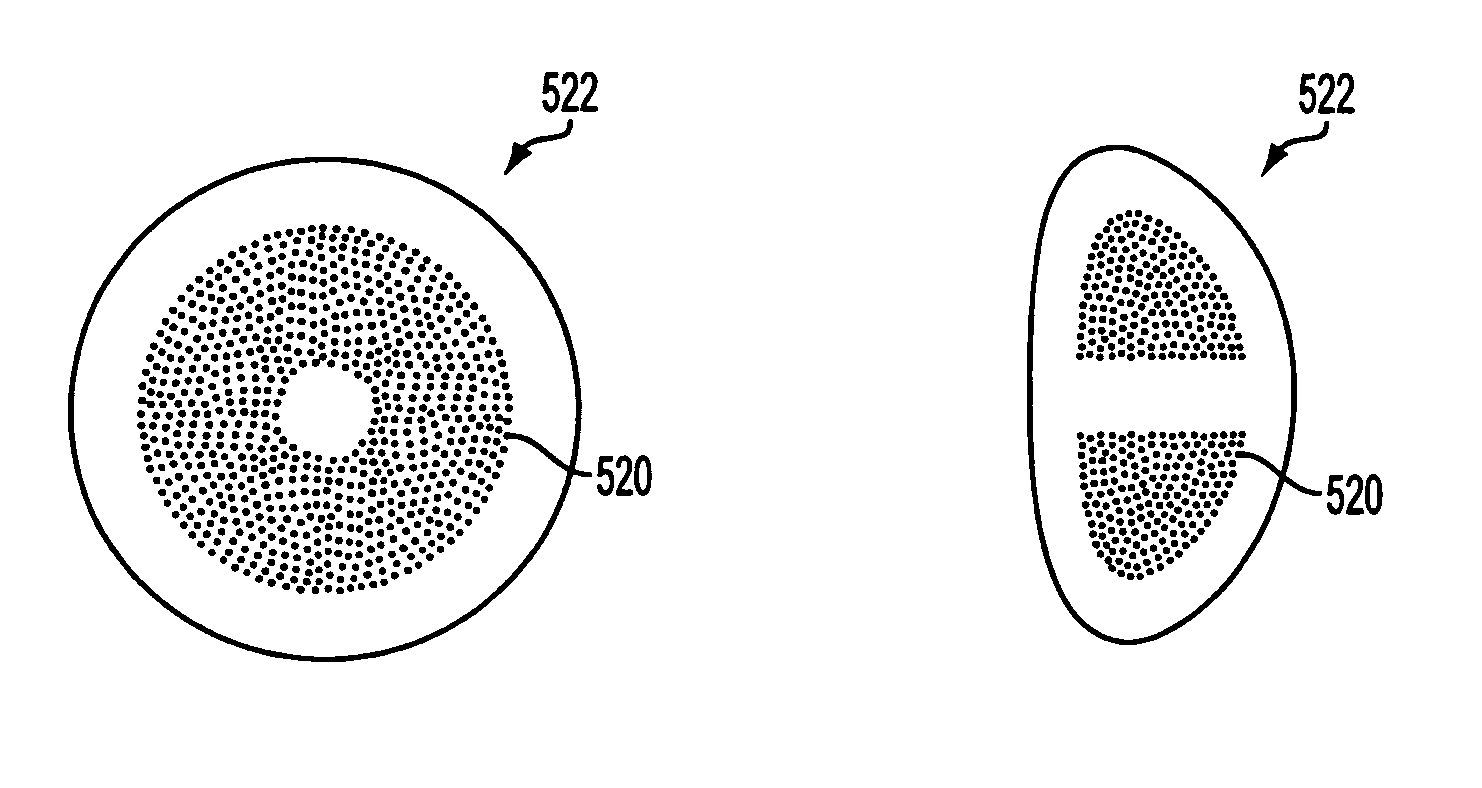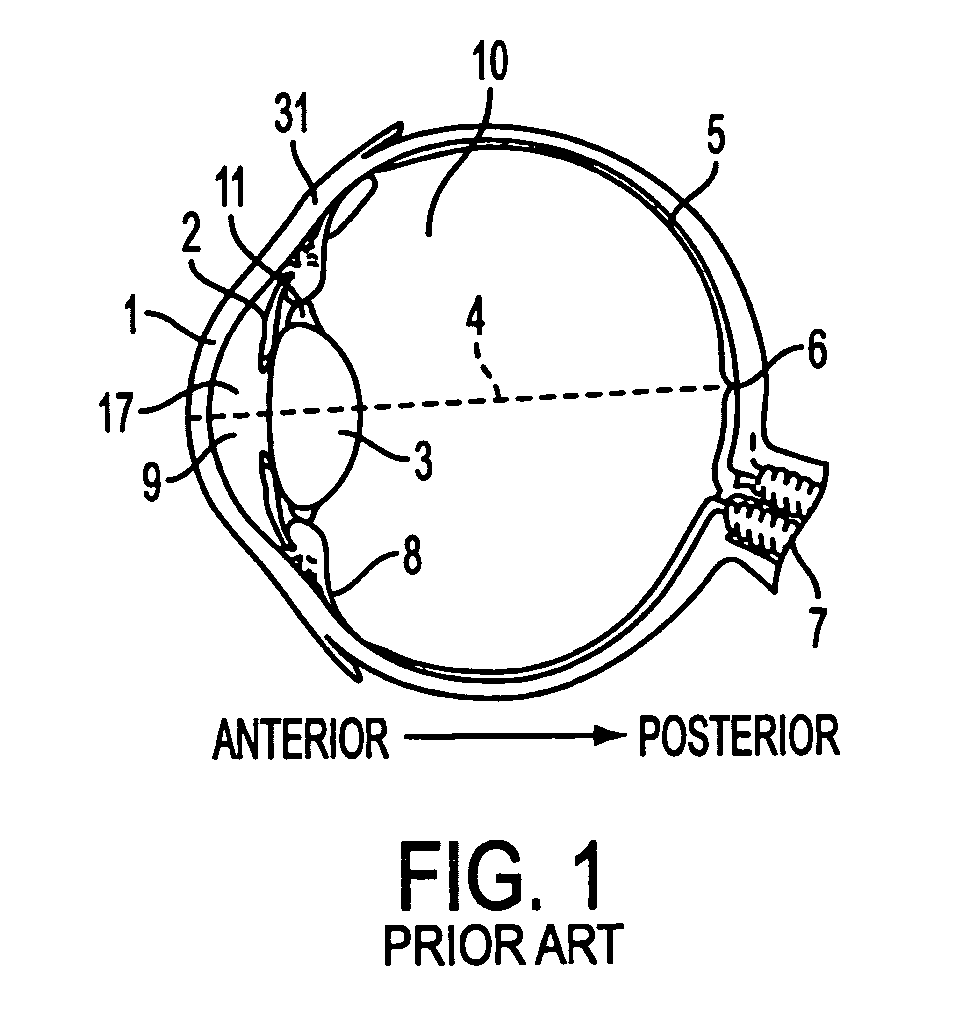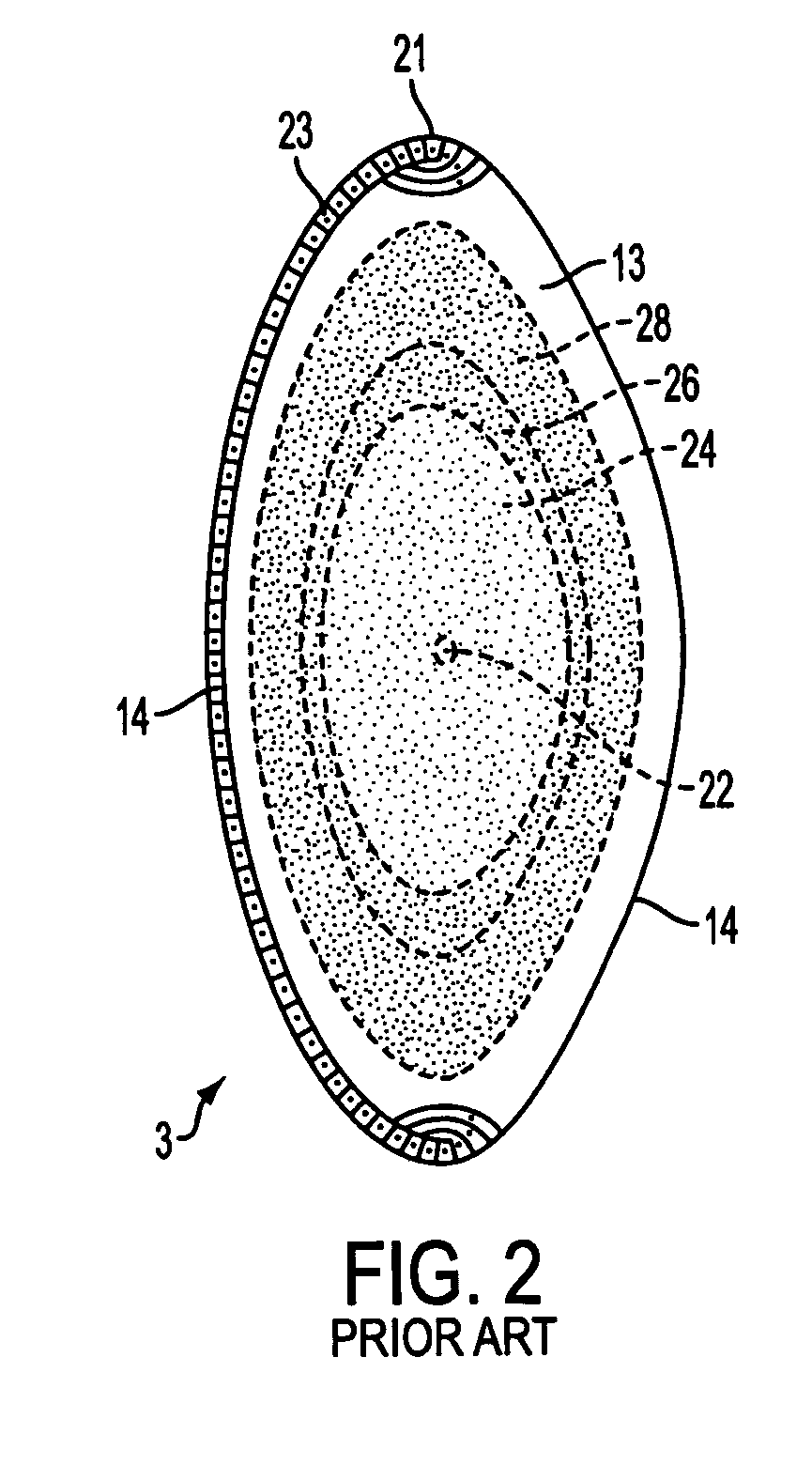[0034]In a preferred embodiment, the creation of microspheres occurs through a mechanism that may be referred to as photodisruption. The photodisruption mechanism used to create microspheres, which is described in detail in the following section, produces the beneficial visual effects mentioned above (correction of presbyopia and other refractive errors, retardation and prevention of
cataracts, and treatment of other ocular anomalies) via two primary
modes of action that are termed (1) photophacomodulation and (2) photophacoreduction. Photophacomodulation refers to any mechanism of light-induced change in crystalline lens tissue that affects its chemical and physical properties and thereby alters the dynamic properties of the crystalline lens including its ability to change shape. Photophacoreduction refers to any mechanism of light-induced change in the crystalline lens whereby the change primarily effects a reduction in the
mass or volume of crystalline lens tissue. While these two terms are intended to be used consistently throughout this patent, they may be referred to elsewhere respectively using the terms crystalline lens modulation and volumetric reduction, or in combination using the umbrella term photorefractive lensectomy. By either
mode of action, the beneficial effects of the invention are principally achieved through generation of microspheres (as noted above).
[0035]Embodiments of the invention that utilize the photophacomodulation mode (effecting a change in the dynamic properties of the crystalline lens) generally generate individual microspheres essentially independent from one another, or may generate individual microspheres that interact, for example by coalescence after generation. Generally, the methods of the invention use the photophacomodulation mode to change lens tissue within the older areas of the ocular lens such as the
nucleus, and particularly within specific regions of the
juvenile and adult
nucleus, since older, more compact tissues are thought to be most responsible for loss in
accommodation. In this respect, the present invention can be contrasted with disclosures of the Schachar patents previously cited, in which Schachar proposes treatment of the
epithelium, an outer cortex layer, to impair the growth of the
epithelium.
[0036]Embodiments of the invention that utilize the photophacoreduction mode (effecting
volume reduction in the crystalline lens) generally generate microspheres that overlap on formation because their respective sites of photodisruption are contiguous as described below. Generally, the methods of the invention use the photophacoreduction mode to reduce lens
tissue volume within the younger cortical areas of the ocular lens, often for the purpose of changing the
topography of the exterior surface of the lens. The photophacoreduction mode, however, may be used within the nuclear regions as well.
[0037]In a preferred embodiment the methods of the invention such as photophacomodulation or photophacoreduction can be performed as outpatient ophthalmic procedure without the use of general
anesthesia and without outside
exposure of incised tissue with possible consequent infection.
[0038]A further benefit of the present invention for presbyopic correction is that it may actually restore natural
accommodation (i.e., the ability of the lens to change its focusing dynamics), instead of attempting to correct for presbyopia through the use of aspherical
optics on external lenses, implanted lenses, or the
cornea, or requiring the
gaze of the eyes to be translated to two or more locations as when using bifocal, trifocal, or progressive lenses.
[0039]In another embodiment, treatment according to this invention makes possible the retardation of cataract development. As mentioned above, Koretz observed in 1994 that an inverse relationship exists between lens accommodation and light scatter development, and that the processes leading to light scatter accelerate with decreasing accommodation. In view of the corollary that maintaining or increasing accommodation limits the increase of or reduces light scatter, by surgically increasing accommodation, as mentioned above, embodiments of the present invention may reduce current and anticipated future increases in light scatter. It is hypothesized that such a reduced rate for the processes leading to light scatter is achieved, at least in part, through increased aqueous circulation within the crystalline lens, which results from increased accommodation. As well, the present invention encompasses the creation of microchannels through the photodisruption process that would enhance aqueous circulation within the lens and thereby lead to reduced light scatter. This cataract
retardation effect is differentiated from cataract removal (partial or full) and cataract prevention. Cataract retardation has been suggested elsewhere through the use of pharmaceuticals such as antioxidants used over long periods of time that allow for maintaining the transparency of the lens. In this invention, we disclose the use of antioxidants, but only for treatment of the acute or immediate effects of the
laser therapy during and after lens
irradiation. It is the longer term effects of
laser therapy that may lead to a reduction in cataract development through use of certain embodiments of this invention. Whereas cataract removal traditionally has meant the
total removal of the lens except for the
posterior capsule, and Gwon (U.S. Pat. No. 6,322,556) has proposed removing partial cataracts, both complete and partial removal are different from cataract retardation, which is a benefit of embodiments of this invention.
 Login to View More
Login to View More  Login to View More
Login to View More 


